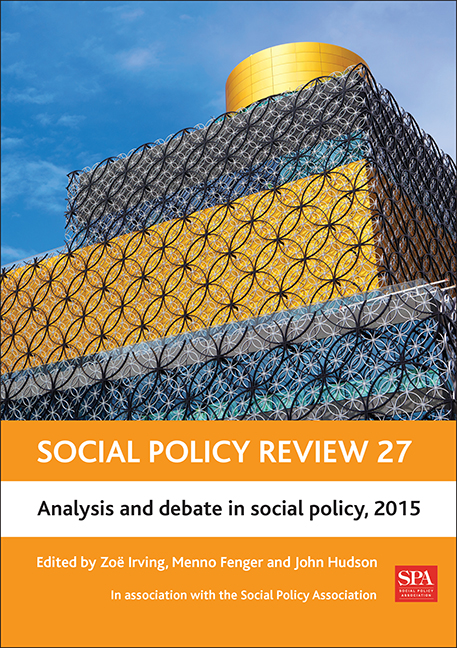Book contents
nine - Applying welfare regime ideal types in empirical analysis: the example of activation
Published online by Cambridge University Press: 08 March 2022
Summary
Introduction
Twenty-five years of welfare state research after the publication of Esping-Andersen's seminal The three worlds of welfare capitalism (1990) have shown that the welfare regime approach is here to stay, in spite of the manifold criticism that has been raised against Esping-Andersen's regime typology, not only on methodological but also on conceptual grounds. More specifically, neither dissatisfaction with Esping-Andersen's classification of liberal, corporatist-conservative and social-democratic welfare states, nor the objection that important social policy dimensions such as gender or activation are lacking from Esping-Andersen's framework, and not even the shortcoming that Esping-Andersen's regime conception is too monolithic and static, have led to a discarding of the basic insight that welfare cultures and welfare institutions display a limited number of internal ‘logics’ (cf Arts and Gelissen, 2002; Kasza, 2002; Scruggs and Allan, 2006; Danforth, 2014). In order to mitigate these shortcomings while ransoming the idea that welfare states decommodify social risks and structure the life chances of their citizens to different degrees and in different ways, a growing body of literature has proposed that Esping-Andersen's empirics-based regime typology should be replaced by purely analytical ideal types. A major advantage of welfare regime ideal types is that they can be applied not only to welfare states, but also to regional and local welfare systems as well as to particular welfare programmes such as healthcare, family policy or unemployment protection (see, for example, Bambra, 2007; Aspalter, 2011; Ferragina and Seeleib-Kaiser, 2011; Powell and Barrientos, 2011; Rice, 2013).
Interestingly, and despite a growing consensus that welfare regimes should be understood not as fixed entities but as heuristic tools for mapping and analysing differences between welfare systems and programmes, systematic applications of regime ideal types in empirical analysis are still rare (some exceptions include Bolderson and Mabbett, 1995; Bannink and Hoogenboom, 2007; Aurich, 2011; Hudson, 2012). Instead, most comparative welfare regime analyses continue to rely on state-centric and inductive methods of regime classification, building or probing welfare regime typologies based on empirical differences within small samples of welfare states. In order to advance the use of welfare regime ideal types in social policy research, this chapter offers some reflections on the practical applicability of regime ideal types.
- Type
- Chapter
- Information
- Social Policy Review 27 , pp. 171 - 198Publisher: Bristol University PressPrint publication year: 2015



